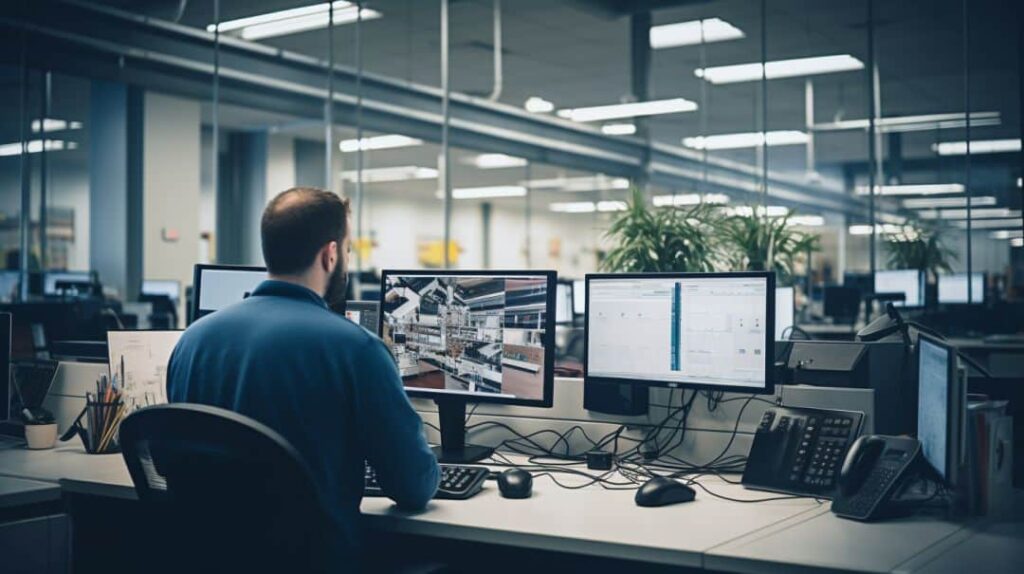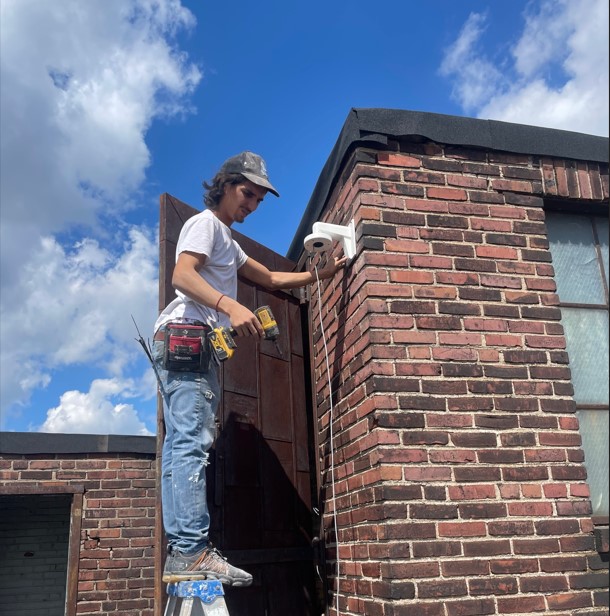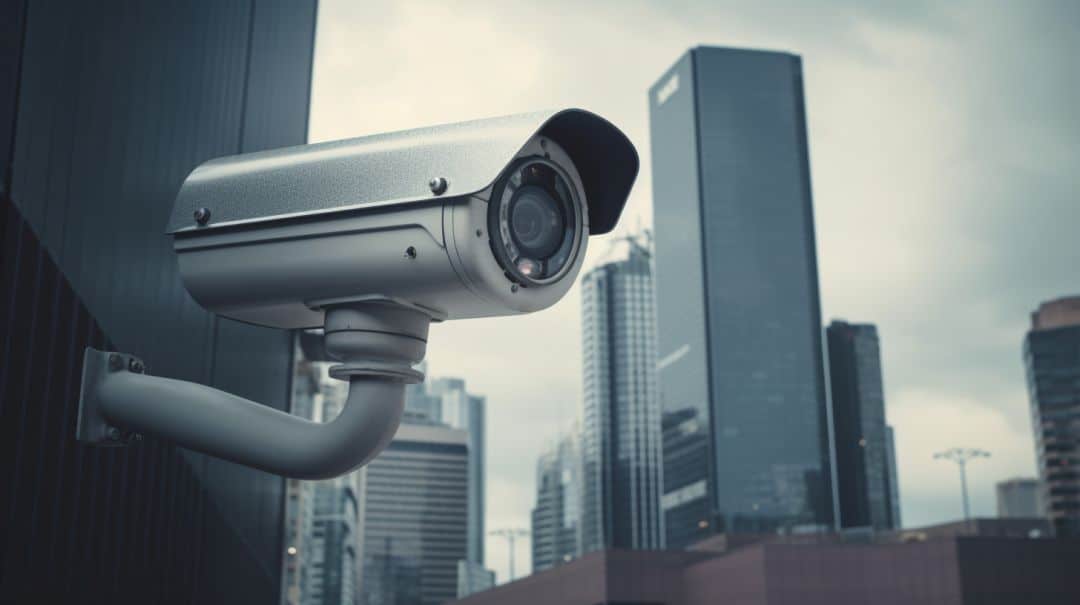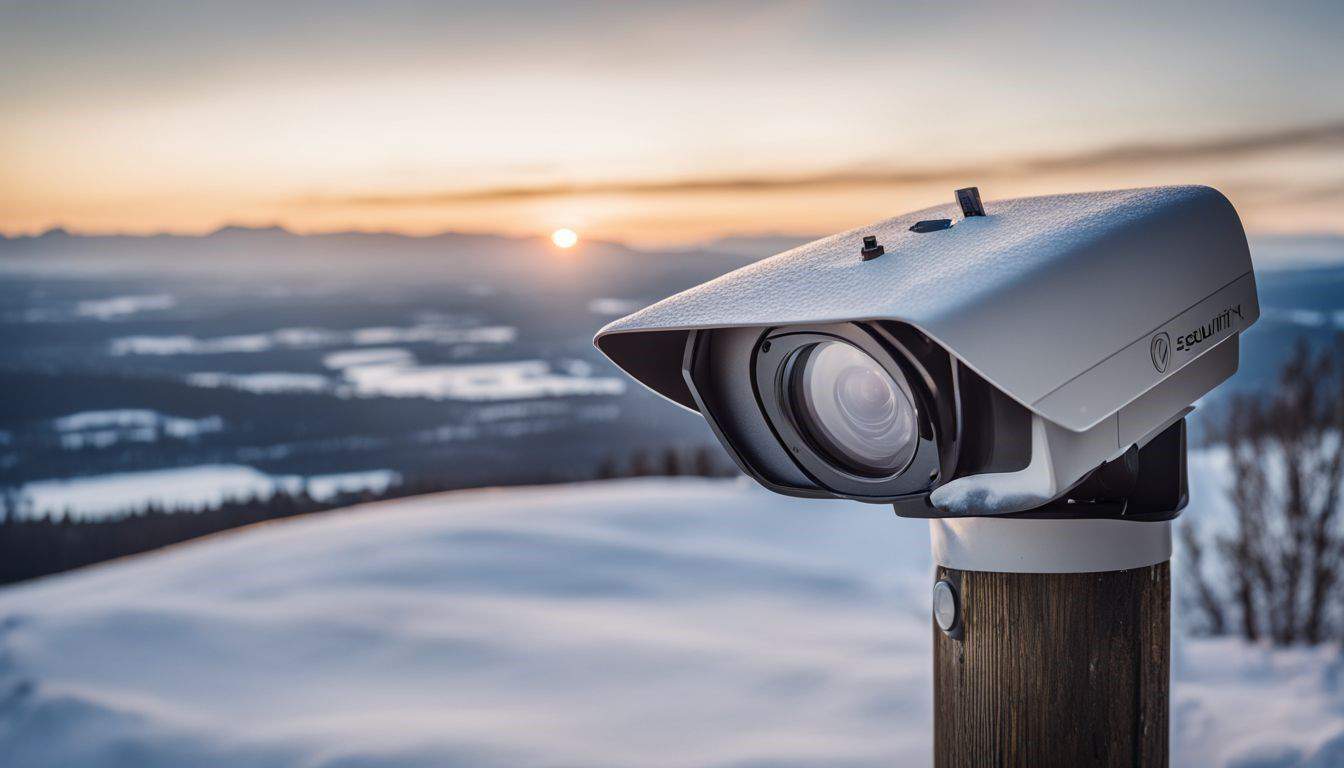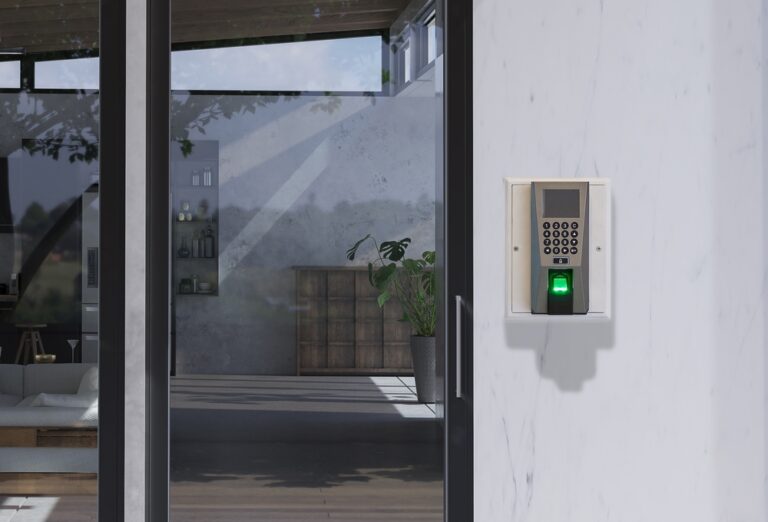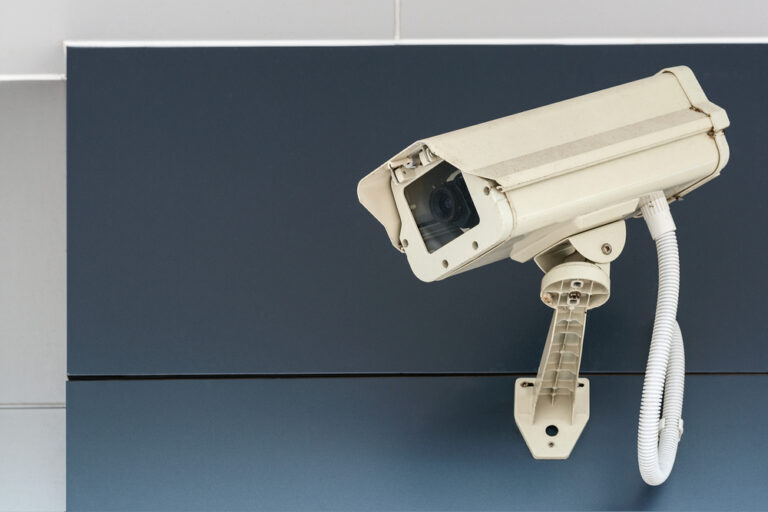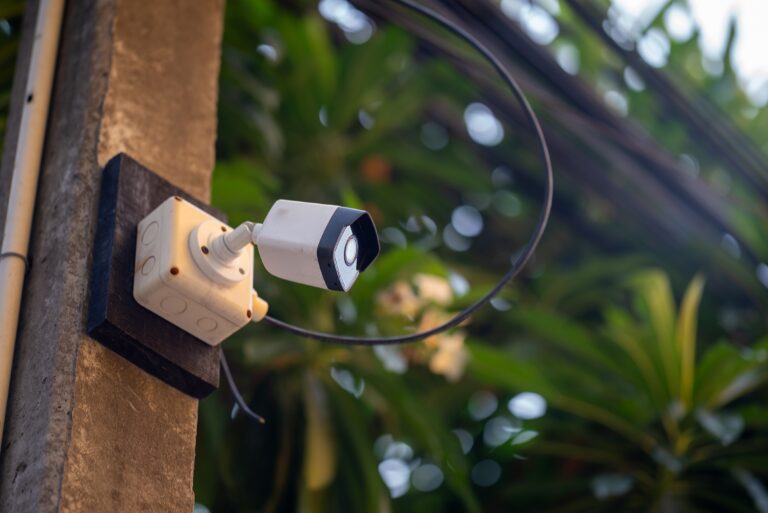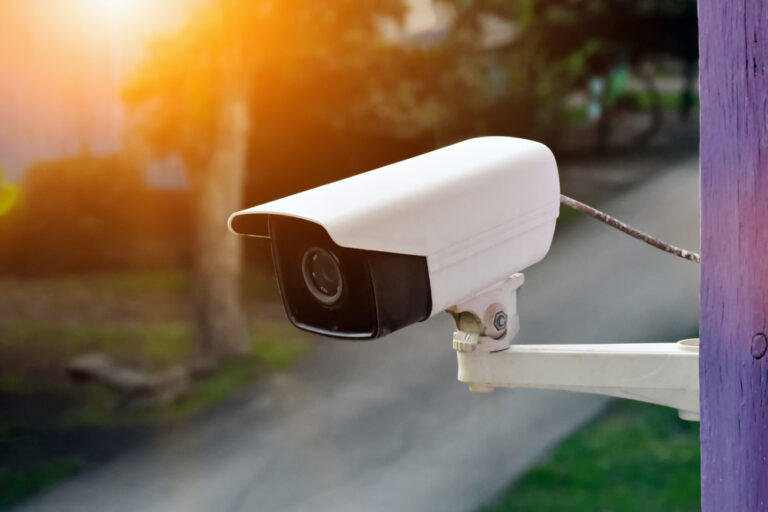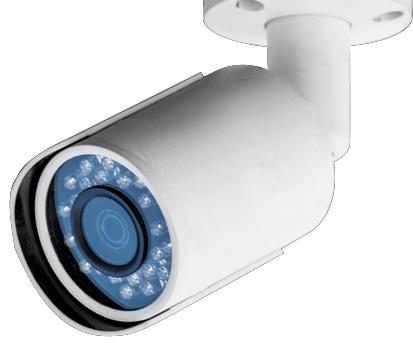- 1) Key Takeaways
- 2) Importance of a Well-Set-Up Security System
- 3) Planning for Your Security System
- 4) Preparing for Installation
- 5) Professional Security Camera Installation
- 6) DIY Security Camera Installation
- 7) Connecting Security Cameras to the Network
- 8) Testing and Maintaining Your Security System
- 9) Additional Tips for Successful Security System Setup
- 10) Conclusion
-
11)
FAQs
- 11.1) What factors should I consider when selecting security cameras?
- 11.2) Should I hire professionals or install a security system myself?
- 11.3) How can I ensure my cameras maintain a reliable connection?
- 11.4) What maintenance tasks should I do to keep my system working effectively?
- 11.5) What are some common issues and solutions for a security system?
In the digital age, your sense of security hinges not just on locks and bolts, but also on the electronic eyes and ears that form your home or business’s security system. With over a decade of expertise in safeguarding properties with cutting-edge technology, I’ve seen firsthand how a well-implemented security setup can act as both a shield and sentinel for your most valuable assets.
Grasping the nuances of networked defenses is not just savvy—it’s essential. A sturdy security strategy doesn’t merely deter intruders; it fortifies you against unseen cyber threats that could rattle the very core of any enterprise.
Dive deeper into this article to uncover strategies tailored to keep prowlers at bay while securing your digital gateways with ironclad precision. Read on for peace of mind made simple.
Key Takeaways
- Choosing the right security cameras is key to an effective system; consider factors like camera resolution, field of view, lighting conditions, and motion detection features.
- Professional installation offers expert knowledge, time-saving setup, quality assurance and stress reduction compared to DIY projects.
- A well-planned security camera installation involves assessing power supply needs, and ensuring a stable Wi-Fi connection or hardwired network infrastructure for reliability.
- Camera placement should focus on main entry points and areas with valuables; strategic positioning helps maximize coverage while avoiding blind spots.
- Maintaining proper up-to-date technology, including surveillance equipment upgrades and regular system testing ensures long-term effectiveness against threats.
Importance of a Well-Set-Up Security System
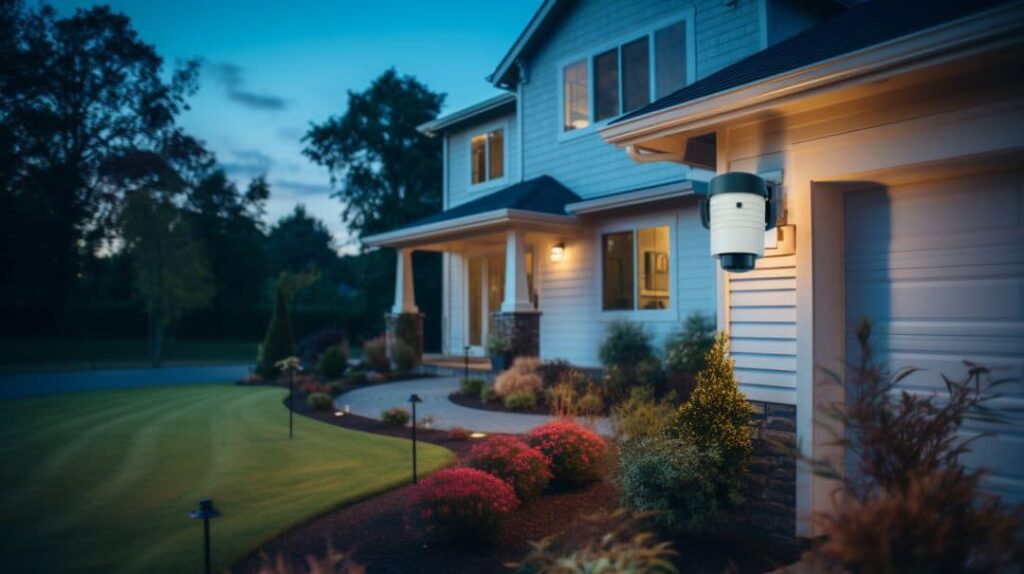
A well-set-up security system is your first line of defense, safeguarding not just possessions but also the safety and comfort of those within its watch. It transcends mere theft prevention, actively monitoring for any potential hazards that could threaten the sanctity of your personal or business space—delivering an invaluable sense of control and tranquility in a world where unexpected risks lurk.
Protects against burglary and theft
Security systems act as a strong deterrent to criminals looking for an easy target. With high-quality security cameras in place, you create a visible line of defense that often causes would-be burglars to think twice before attempting to break into your property.
These systems capture clear footage of any suspicious activity, allowing you to hand over concrete evidence to law enforcement if theft occurs.
Equally important, having a robust system ensures that your physical assets are under vigilant surveillance around the clock. This constant monitoring not only scares off intruders but also supports rapid response and recovery efforts should an incident happen.
Next, let’s consider how security systems keep watch for potential safety hazards beyond theft and burglary.
Monitors for potential safety hazards
Beyond guarding against theft, your security system plays a crucial role in the surveillance of safety hazards around your property. It constantly checks for unusual activities and environmental dangers such as fires, gas leaks, or flooding.
These systems are equipped with sensors that can detect smoke, carbon monoxide, and even water levels to raise an early alarm. Quick detection allows you to take immediate action to prevent harm to your family or employees.
Automated alerts ensure you’re informed of potential risks in real-time, whether you’re on-site or managing from afar through a mobile device or laptop. With these tools at hand, any signs of danger prompt swift notifications enabling prompt response before situations escalate.
By monitoring these aspects closely, your security setup becomes an essential component in maintaining a safe environment for everyone under your care.
Provides peace of mind
After ensuring your security system’s ability to alert you about safety hazards, the next benefit it offers is invaluable peace of mind. Knowing that your home or business is under watchful eyes round the clock can significantly reduce stress and anxiety.
Imagine leaving for vacation or closing up shop for the night, feeling confident that any unusual activity will trigger an immediate notification to either your smartphone or a central monitoring service.
This constant vigilance allows you to focus on life’s other important tasks and enjoyments without worry.
Your installed surveillance cameras serve as silent guardians, deterring potential intruders just by their presence while also documenting all events in case evidence is required later.
With advanced features such as night vision and motion detection offered by modern technology like digital video recorders (DVR) and network video recorders (NVR), you gain not just security but also a sense of control over your environment.
No matter where you are – connected through a Wi-Fi network on the web or via a mobile app – this seamless connectivity ensures real-time updates, keeping what matters most to you safe and secure.
Planning for Your Security System

When strategizing the installation of your security system, it’s pivotal to conduct a thorough assessment tailored to safeguarding all aspects of your property. Optimal protection hinges on selecting suitable cameras and deciding whether to employ professionals or embark on a DIY project.
Assessing your needs
Understanding the specific risks your home or business faces is the first step in creating an effective security system. Consider what you need to protect: Is it merchandise, sensitive data, customer information, or simply the safety of your family? Evaluating these factors helps determine whether you need high-definition cameras for detailed footage, motion sensors for undetected movements, or cybersecurity measures to guard against virtual intruders.
Selecting a suitable combination of physical and cyber protection features ensures comprehensive coverage. You might integrate wireless security cameras with night vision capabilities for after-hours monitoring or incorporate smart home technology like automated lighting to deter potential threats.
Keep in mind that your needs may evolve over time; hence, opt for a flexible setup that can adapt to new challenges and technologies as they arise.
Choosing the right security cameras
After assessing your security needs, you’ll find that selecting the right cameras is pivotal to fortifying your property. This decision impacts not only surveillance effectiveness but also your long-term satisfaction with the system.
- Consider camera resolution: High-definition (HD) cameras offer clearer images, which can be crucial for identifying details such as faces or license plate numbers. Look for cameras with at least 1080p resolution.
- Evaluate the field of view: A camera’s lens determines how much area it can capture. Wide-angle lenses cover more ground, reducing the number of cameras needed but sometimes at a lower detail level.
- Think about lighting conditions: Ensure your cameras perform well in varying light levels. Cameras with night vision capabilities are essential for continuous monitoring.
- Prioritize motion detection features: Motion sensors can trigger recordings or alerts, helping you stay informed of activity without needing constant live monitoring.
- Assess audio capabilities: Some security cameras come with built-in microphones that allow for audio recording, which could provide additional context during an incident.
- Contemplate wired vs. wireless options: Wired cameras typically offer more reliable data transfer but require more complex installation. Wireless cameras offer flexibility and easier setup.
- Factor in weather resistance: If placing cameras outdoors, they must withstand local weather conditions. Look for durable designs and weatherproof ratings.
- Weigh storage options: Decide whether to use a DVR or NVR for local storage or cloud services for remote access to footage. Each has its own advantages regarding capacity and accessibility.
- Verify compatibility with other devices: If integrating with smart home systems like Google Nest or using remote monitoring apps, check that the camera is compatible with these technologies.
- Analyze ease of access and control: User-friendly interfaces on mobile apps or via Internet Explorer ensure you can easily monitor your home security camera installation from anywhere at any time.
Deciding on a professional installation or DIY
Once you have selected the right security cameras, it’s time to tackle installation. This can be a critical decision; whether to hire professionals or take on a do-it-yourself (DIY) project depends on several factors including your technical proficiency, time availability, and budget considerations.
Opting for professional installation services ensures that your system is set up correctly from the get-go. Installers bring expertise and experience that can prevent costly mistakes, and they often offer warranties or support for their work.
On the other hand, installing security systems yourself could save money upfront and give you complete control over the setup process. It allows you to become familiar with every aspect of your system which might come in handy during troubleshooting.
However, make sure you are ready to deal with potential challenges such as ensuring proper power and network connectivity or securely running ethernet cables without safety hazards.
Keep in mind that sophisticated tools like an NVR (network video recorder), DVR (digital video recorder), screen reader configurations, and smart lighting integrations – all require careful handling to function optimally within your security network.
Preparing for Installation
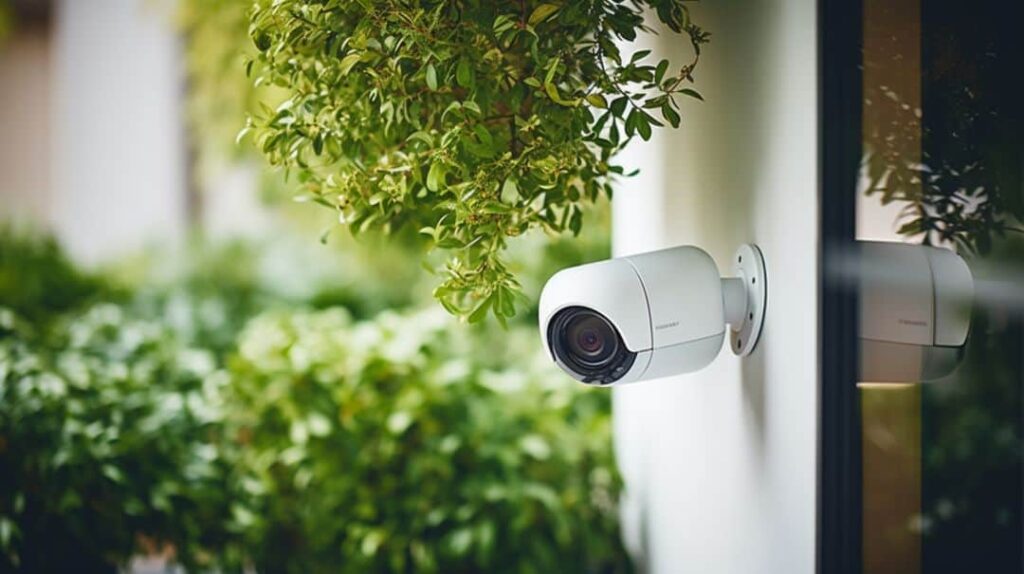
Before you embark on the journey of installing your security system, a meticulous preparation phase is key to ensure a smooth and efficient setup; keep reading for crucial insights into making installation day a resounding success.
Gathering necessary tools and equipment
Gathering the right tools and equipment is a crucial step in setting up your security system. Ensure you have everything you need at hand to avoid interruptions during the installation process.
- Check your inventory: Make a list of all items included with your security cameras, such as mounts, screws, and any included tools.
- Purchase additional tools: Depending on your security system, you might need a drill for pilot holes, screwdrivers for mounting, and a ladder to reach high places.
- Acquire network components: If you’re setting up an internet-connected system, ensure you have a reliable wireless router or the necessary ethernet cables for a wired connection.
- Get power ready: Identify nearby power outlets or acquire extension cords if needed. For some systems, USB cables may be required to supply power to cameras.
- Prepare for cable management: To connect your cameras securely, buy securing ties and weatherproof conduits if they run outdoors. This keeps your security camera cables organized and safe from interference or damage.
- Think about storage: Decide whether you will use cloud storage or local recording options like SD cards to store security footage; make sure these are compatible with your system.
- Test connectivity devices: Ensure that devices such as modems and routers function properly before setting up to prevent network issues during camera installation.
- Consider specialty items: For particular areas like nurseries or front doors, specific devices such as baby monitors or nest doorbells can be integrated into your security setup.
- Have a monitoring plan: Determine how you’ll monitor the live feed from your cameras—whether it’s through a TV, smartphone app, or computer.
- Plan for trial runs: Once installed, test each component—cameras, playback on TV/screens, recording onto SD cards—to ensure proper operation.
Mapping out camera placement
Once you have your tools and equipment ready, it’s time to focus on where your security cameras will go. Mapping out camera placement is a pivotal step in ensuring maximum coverage and efficiency of your security system.
- Identify the main entry points such as front and back doors, windows, or gates, since these are common targets for intruders.
- Consider adding cameras to areas where valuables are stored or where sensitive business operations occur, addressing both asset security and data protection.
- Use a blueprint or sketch of your property to visualize camera angles and eliminate any blind spots.
- Place cameras high enough to prevent tampering but within reach for maintenance and angle adjustments.
- Ensure that each camera has a clear line of sight with no obstructions like trees or decor items blocking the view.
- Factor in lighting conditions for each location; choose cameras with night vision capabilities for darker areas.
- Orient indoor cameras to monitor main hallways, staircases, or common areas to keep an eye on movement within the premises.
- Verify that outdoor cameras are weatherproof and positioned under eaves or protective covers if not fully waterproof.
- Integrate motion sensors with cameras in low-traffic areas to conserve power and storage while staying alert to unusual activity.
- Evaluate the need for pan-tilt-zoom (PTZ) cameras that can change direction and zoom in on specific activities if surveillance needs are more dynamic.
- Keep in mind local privacy laws when placing cameras so as not to intrude on neighbors’ privacy or public spaces inadvertently.
Ensuring proper power and network connectivity
Ensuring your security system has reliable power and network connectivity is a fundamental step in setting up for success. A consistent power supply and stable internet connection are indispensable to keep your security cameras active and connected at all times.
- Select a power supply that matches the requirements of your security cameras. Check the voltage and current specifications to avoid damaging the equipment.
- Install uninterrupted power supplies (UPS) for critical components. This ensures your system continues to operate during a power outage.
- Position your security cameras close to power outlets. Use extension cables only if necessary, and ensure they are high-quality and safely routed to prevent tripping hazards.
- Secure Wi-Fi networks by setting strong passwords. Change default manufacturer passwords immediately after installation to prevent unauthorized access.
- Choose a Wi-Fi router capable of handling data transmission loads from multiple cameras without lagging or dropping connections.
- Test the strength of the Wi-Fi signal where you plan to install wireless cameras. Consider using Wi-Fi extenders or a more robust router if the signal strength is weak.
- For wired networks, use Ethernet cables of adequate length to reach each camera without leaving excessive slack. Secure cables along walls or ceilings with clips or conduits.
- Weatherproof all outdoor cable connections to protect against moisture and corrosion that could interrupt transmission signals.
- Schedule regular checks on both power sources and internet speeds. Ensure systems consistently meet operational requirements for optimal performance.
Professional Security Camera Installation
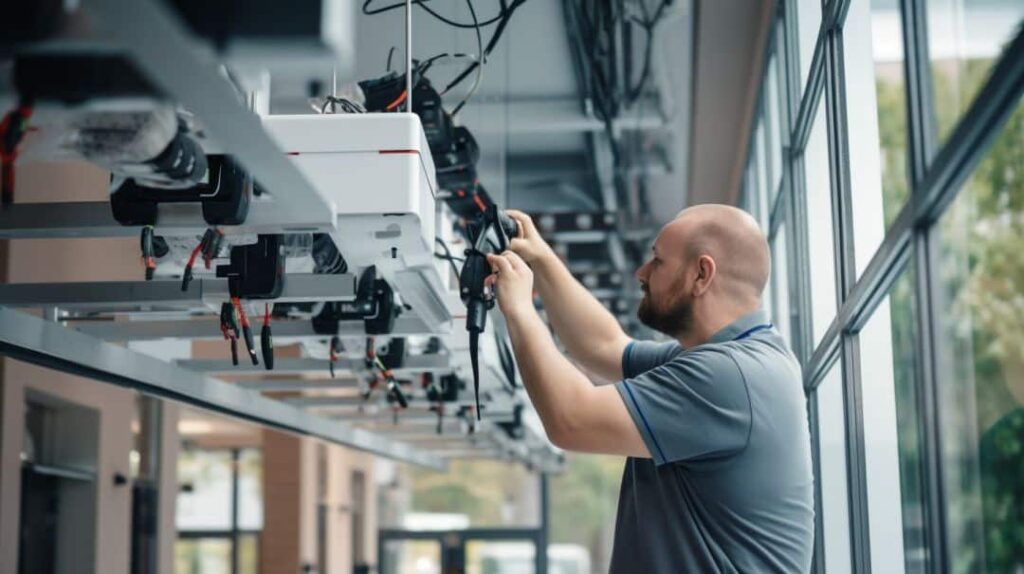
When you invest in a professional security camera installation, you’re not only guaranteeing that your equipment will function optimally from the get-go, but you’re also tapping into the expertise of seasoned technicians who can navigate any unique challenges your property may present.
This route ensures every component is properly integrated and set to vigilantly safeguard what matters most to you.
Benefits of professional installation
Choosing professional installation for your security system can give you confidence that it’s set up correctly. Experts bring the experience and tools required to ensure everything works as intended.
- Expert Knowledge: Professional installers possess a deep understanding of cutting-edge technologies. They’ll know exactly how to integrate your Wi-Fi or wired network with various security devices.
- Time-Saving: Your time is valuable, and professionals can complete installations much faster than a DIY approach. They have the routine down, meaning you’ll have your system up and running swiftly.
- Quality Assurance: With professional services, you get the added benefit of quality guarantees. If something isn’t right, they’ll address it without extra charges in most cases.
- Stress Reduction: A security system setup involves many components, from cameras to network connections. Professionals handle all aspects, reducing stress and potential errors for you.
- Enhanced Security: Professionals understand the importance of proper camera placement and positioning for optimal surveillance coverage, taking into account blind spots that might be overlooked in a DIY installation.
- Customization: Specialists will tailor the installation to your property’s unique needs and specifications while adhering to best practices in security compliance.
- Technical Support: After installation, if network issues arise or troubleshooting is required, a professional installer provides invaluable support to resolve problems quickly.
- Regulatory Compliance: Navigating regulatory requirements can be complex; professionals ensure that your setup complies with all local laws and regulations regarding surveillance and privacy.
- System Upgrades: A skilled technician stays informed about industry advancements and can recommend upgrades to keep your system effective against evolving threats.
- Secure Installation: All installed equipment is set up securely to prevent tampering or accidental damages which helps reduce risks of cyber attacks through technical measures understood by experts in the field.
- Long-term Cost Savings: Although there’s an upfront cost, avoiding common mistakes during installation protects against future expenses related to repairs or adjustments due to incorrect setup initially.
- Warranty Benefits: Many products come with warranties that are only valid if installed professionally—this can safeguard against defects or failures in equipment.
- Peace of Mind: Lastly, knowing experts who understand security management have handled the setup allows you to rest assured that staff safety and asset protection are in capable hands.
What to expect during the process
After opting for professional installation, you’ll embark on a smooth and structured setup journey. A team of skilled technicians will arrive with all the necessary tools and equipment, ready to bring your security vision to life.
They will expertly map out camera placement, ensuring each device covers the optimal field of view without any blind spots. The process includes running cables discreetly where necessary, setting up power sources, and integrating everything into your network.
This careful groundwork lays the foundation for a robust security system that addresses staff safety, asset security, and data protection effectively.
The professionals will configure your cameras and connect them seamlessly to your wireless telephone or internet network depending on their specifications. Throughout this stage, they respect your space while adhering strictly to compliance best practices like data risk assessment and access control management.
Once connected, they’ll perform rigorous testing procedures to confirm every component operates as intended—providing high-quality surveillance footage that can be accessed remotely at any given time through various devices like smartphones or computers securing peace of mind knowing that help is just a telephone number away should you encounter any issues post-installation.
Cost considerations
Now that you’ve got an idea of what installation entails, let’s talk about costs. The investment in a security camera system varies greatly, depending on factors such as the number of cameras, quality, and whether you opt for professional installation or do it yourself.
High-definition cameras typically come with higher price tags but offer superior video clarity, which could be crucial for your business operations. In addition to upfront equipment expenses, consider ongoing costs like maintenance and any subscription services if you choose cloud storage or advanced monitoring options.
For homeowners keeping an eye on expenses is just as important. While DIY installations can save money initially, they might lead to more costs down the road if not done correctly.
A faulty setup could leave blind spots or fail when most needed – possibly costing more than just dollars to fix. Make sure you weigh these potential risks against the immediate savings before deciding on how to set up your system; think about long-term reliability and security above cutting corners on expenditure.
DIY Security Camera Installation
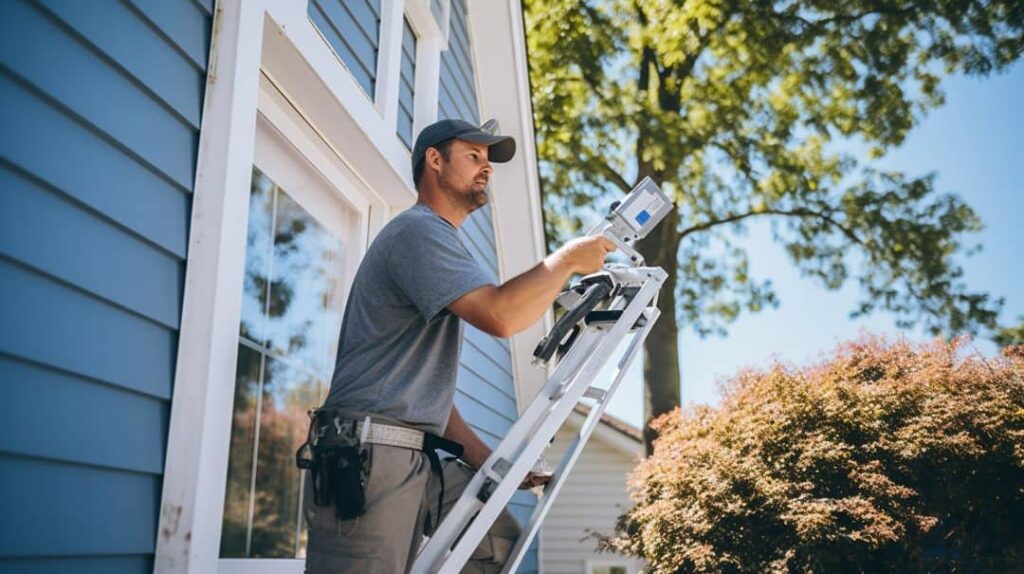
Embracing the DIY route for your security camera installation can empower you with direct control over your home or business safety, but it’s essential to approach this task with a detailed plan and precise execution.
Let’s delve into how to navigate the complexities of self-installation, ensuring that your initiative in safeguarding your premises doesn’t inadvertently compromise its security.
Steps to setting up a DIY security system
Setting up a DIY security system can be a rewarding project that saves you money and allows for customization. Follow these steps carefully to ensure your safety and the effectiveness of your new system.
- Evaluate your property to identify critical areas that need surveillance, considering both indoor and outdoor spaces.
- Research and select the right security cameras that suit your needs, which may include features like night vision, motion detection, or weather resistance.
- Purchase all necessary equipment including cameras, mounting hardware, power supplies, and any additional sensors or alarms.
- Develop a layout plan for camera placement, ensuring coverage of all entry points and high-risk areas without creating blind spots.
- Install the cameras according to manufacturer instructions; mount them securely and angle them for optimal field of view.
- Establish proper power connections for each camera, which could involve plugging into outlets or hardwiring into your home’s electrical system.
- Connect each camera to your network following steps specific to whether they are wireless or wired models; this typically involves syncing with your router.
- Secure cables and wires to prevent tripping hazards as well as tampering; use cable conduit or clips where needed.
- Set up the recording system using a dedicated computer server or network video recorder (NVR) that stores footage either locally or in the cloud.
- Test each camera to confirm it’s working correctly by checking both live feeds and recorded footage for clarity and stability.
- Install any accompanying software on your devices so you can monitor the security system remotely through the internet whenever necessary.
- Adjust settings such as motion sensitivity levels, notification preferences, and recording schedules based on daily routines and specific concerns.
Common mistakes to avoid
Establishing a security system requires attention to detail and careful planning. To maximize your safety, sidestep these common pitfalls during installation:
- Ignoring blind spots: Ensure cameras cover all angles. Missing critical areas could leave you vulnerable to undetected activity.
- Skimping on quality: Investing in high-definition cameras pays off through clearer images, which can be pivotal for identifying intruders or analyzing events.
- Overlooking lighting conditions: Cameras must have sufficient lighting to capture usable footage, especially at night. Consider infrared or low-light cameras for dimly lit areas.
- Neglecting outdoor camera protection: Secure outdoor cameras against weather and vandalism with appropriate casing for longevity and uninterrupted operation.
- Forgetting about maintenance: Regularly clean lenses and check connections to prevent system failures that could compromise security when most needed.
- Failing to secure the network: Protect your surveillance network from hackers by using strong passwords, encryption, and regular software updates.
- Underestimating storage needs: Ensure your system has enough storage capacity to retain video footage for as long as necessary before overwriting it.
- Lacking proper power backup: Install an uninterruptible power supply (UPS) to keep your security system running during outages.
- Disregarding privacy laws: Be mindful of legal implications when placing cameras to avoid infringing on neighbors’ privacy rights.
- Choosing DIY without skills: If you lack technical expertise, consider professional installation services to ensure your system functions correctly from the start.
Savings and limitations of DIY installations
Avoiding common mistakes is just the first step; embarking on a DIY installation of your security system can lead to significant cost savings. You won’t pay for professional installation services, and you have the freedom to choose more affordable components that fit your budget.
This approach allows you to learn about your system inside and out, making future troubleshooting easier since you’re familiar with the setup details.
However, a DIY approach comes with its trade-offs. Without expert guidance, the risk of improper installation increases – which could leave critical areas unprotected or result in faulty operation.
Plus, without the backing of a professional service, you may miss out on advanced features and regular maintenance checks that ensure long-term reliability and compliance with security best practices.
Balancing protection needs with personal convenience becomes paramount when taking on such projects yourself.
Connecting Security Cameras to the Network
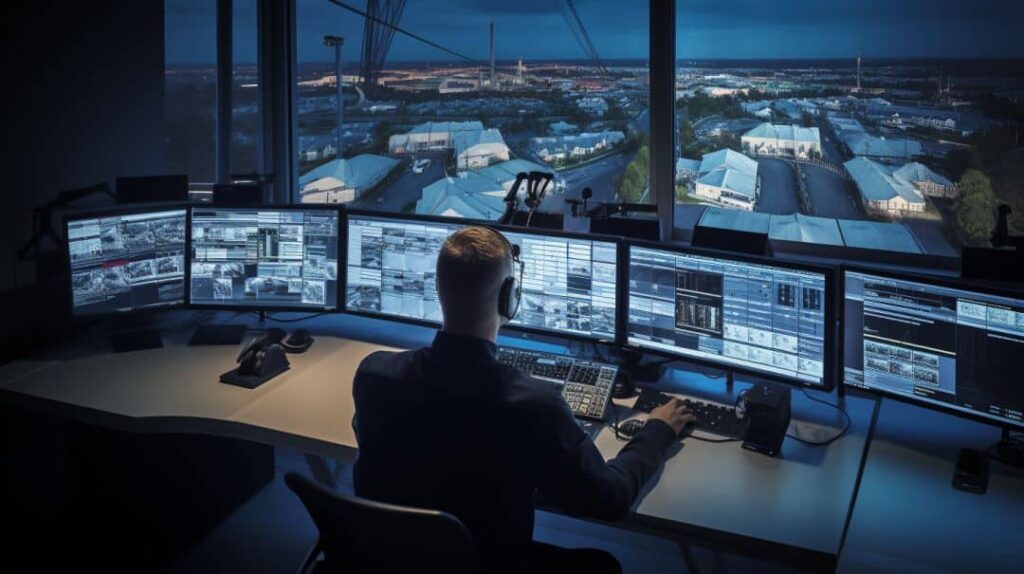
Properly integrating your security cameras into your network is a pivotal step in ensuring seamless surveillance, so stay tuned to unlock the essentials of this crucial process for unwavering protection.
Steps for wireless and wired connections
Setting up your security cameras involves connecting them to your network. Whether wireless or wired, follow these steps to ensure a smooth connection process.
- Choose a strong Wi-Fi password to protect your network from unauthorized access, reflecting the significance of network security for business operations.
- Place your wireless cameras within the Wi-Fi range, ideally with a clear line of sight to your router or Wi-Fi extender.
- Configure each camera using its dedicated smartphone app or web interface, ensuring it is connected securely to your Wi-Fi network.
- Update the camera’s firmware as soon as it’s connected; this keeps the device secure against potential cyber threats.
- Run an Ethernet cable from the camera to your router or switch, considering cable length and routing for optimal data transmission and power supply if using Power over Ethernet (PoE).
- Securely attach cables along walls or ceilings using clips or conduit; weatherproofing is critical for outdoor installations.
- Assign a static IP address to each camera for consistent network communication and easier management.
- Enable encryption on data transmission pathways following best practices in security compliance to safeguard video feeds.
Securing and weatherproofing cables
Once you’ve established your cameras’ network connections, it’s time to ensure the longevity and reliability of those links by securing and weatherproofing your cables. This step is crucial in protecting against environmental damage and potential tampering.
Use cable clips or conduits to firmly attach cables along walls or within structures; this not only keeps them out of sight but also prevents accidental snags or cuts that could compromise your security system’s functionality.
Weatherproofing is equally important for outdoor camera systems, as exposure to rain, snow, or extreme temperatures can lead to malfunctions. Choose weather-resistant cables specifically designed for outdoor use or apply protective coatings that shield standard cables from moisture and UV damage.
Don’t forget to seal any points where cables enter buildings with silicone caulk to block water infiltration—your system depends on every connection staying dry and secure no matter what nature throws at it.
Troubleshooting network issues
After securing and weatherproofing your camera cables, it’s vital to ensure they communicate effectively with your network. Network issues can hamper the performance of your security system, but they can be diagnosed and resolved with some strategic steps.
- Verify the power supply to all devices. Make sure that each camera and networking device is properly plugged in and receiving power.
- Check the connection status. Look at the indicators on cameras and other network hardware to confirm everything is connected.
- Review IP address assignments. Ensure that each device has a unique IP address and that there are no conflicts within your network.
- Test cables for damage. Inspect all wiring for signs of wear or breakage, as damaged cables can disrupt connectivity.
- Reboot routers and cameras. Sometimes a simple restart can resolve temporary glitches or connectivity problems.
- Update firmware regularly. Running outdated software can expose your system to vulnerabilities; keeping it updated minimizes risks.
- Adjust Wi-Fi settings if necessary. For wireless systems, try changing the channel or frequency to avoid interference from other devices.
- Utilize diagnostic tools available within your system’s software. They often provide insights into signal strength, packet loss, and potential errors.
- Contact tech support when needed. If you’re unable to resolve an issue on your own, reach out to customer service or a professional technician for assistance.
Testing and Maintaining Your Security System
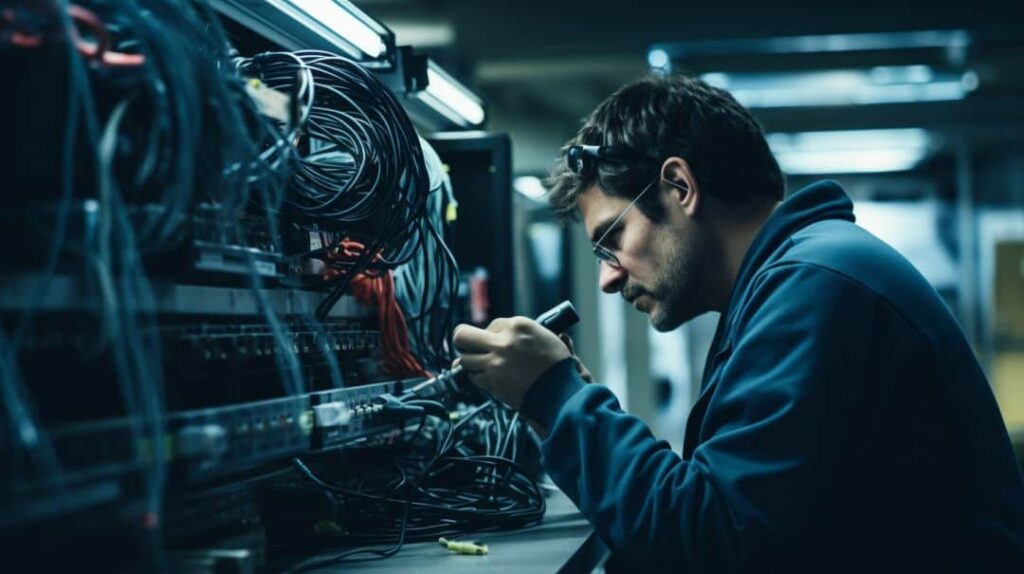
To guarantee your security system remains reliable, a regular rhythm of testing and upkeep is critical. This proactive approach ensures your protective measures are functioning optimally, safeguarding your home or business against unforeseen vulnerabilities.
Regular testing and maintenance checklist
Keeping your security system in prime condition requires regular testing and maintenance. Follow this checklist to ensure you’re always protected:
- Conduct a visual inspection of all cameras and sensors monthly, looking for signs of damage or tampering.
- Test the motion detectors by walking through monitored areas to verify they trigger alerts as expected.
- Check battery levels in wireless components and replace them if they fall below 20% capacity.
- Verify that all security camera feeds are recording clearly without obstructions by reviewing recent footage.
- Update all software and firmware for your security devices to patch vulnerabilities and improve functionality.
- Inspect outdoor cameras for weather damage, cleaning lenses and housings to maintain image quality.
- Confirm that emergency contact numbers within the system are current and correct.
- Ensure that backup power supplies, like UPS systems or generators, are operational in case of a power outage.
- Test the control panel functions by arming and disarming the system to check for any malfunctions or delays.
- Review user access permissions quarterly to remove outdated accounts or adjust privileges as necessary.
Troubleshooting common issues
As you depend on your security system to safeguard your home or business, tackling common issues promptly is crucial. Here’s a rundown on how to troubleshoot some of the typical problems you might encounter.
- Camera Feed Not Accessible: Check if the camera is properly powered and connected to the network. If wireless, verify that Wi-Fi settings are correct and that there’s no interference blocking the signal.
- Motion Detection Failures: Adjust the motion sensor sensitivity settings. Ensure that nothing in the environment, like moving branches or high traffic, triggers false alarms.
- Poor Video Quality: Clean camera lenses gently with a microfiber cloth. Assess whether bandwidth limitations or poor lighting conditions might affect video clarity.
- System Alerts Not Received: Verify all notification settings in your security software. Make sure email or phone details for receiving alerts are up-to-date.
- Night Vision Problems: Inspect infrared lights around cameras for functionality. Replace faulty bulbs or consider upgrading cameras if they underperform during low light conditions.
- Inconsistent Recording: Confirm that your recording devices have ample storage space. Check for any scheduled recording conflicts within your system setup.
- Device Compatibility Issues: Update all security system software and firmware. Make sure each component is compatible with others in terms of brand specifications and technology requirements.
Importance of keeping your system up to date
Keeping your security system updated is crucial for protecting against new threats. Cyber attackers constantly evolve their tactics, and an outdated system can be like an open door for them.
By staying current with software updates, you patch vulnerabilities that could compromise your business’s data or personal information at home. Regular firmware upgrades ensure the highest level of performance from your cameras and sensors, closing gaps that criminals might exploit.
Updated systems also benefit from the latest features and improvements in technology. You gain enhanced detection capabilities, better image resolution, and more reliable alerts to keep watch over your property efficiently.
These updates often include fixes to stability issues as well, reducing the chances of a system crash at critical moments. Now let’s move on to consider additional tips to make sure your security setup meets all expectations for safeguarding what matters most.
Additional Tips for Successful Security System Setup
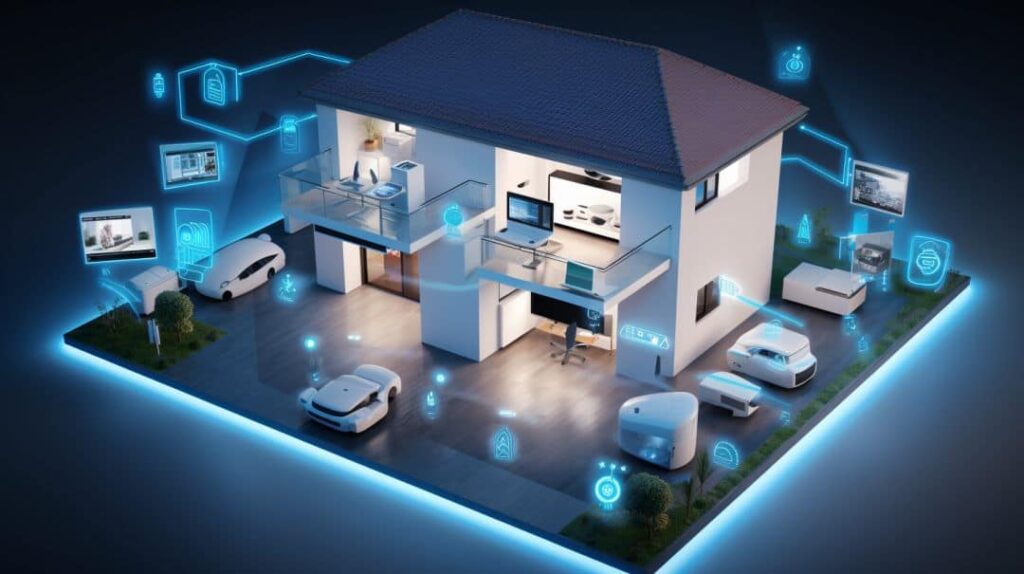
Maximizing the effectiveness of your security system goes beyond initial installation; it’s about adapting to new challenges and staying ahead of potential threats. Embrace advanced techniques and consider individual nuances of your property to fine-tune a robust defense against risks, ensuring full-scale protection that evolves with your safety requirements.
Regularly reviewing and updating security protocols
Ensuring the safety of your home or business starts with a dynamic approach to security protocols. Cyber threats are constantly evolving, which means your defenses must adapt quickly to confront new challenges.
Regular checks and updates to your security measures can protect against unauthorized access and potential data breaches. Incorporating advanced tools for threat intelligence is not just a precaution; it’s essential for maintaining a secure environment.
Make sure that all components of your system, from physical hardware to software solutions, stay ahead of potential vulnerabilities by implementing the latest best practices in security compliance.
This includes regularly changing passwords, updating firmware on cameras and other equipment, and verifying user permissions are current with their need for access. Moving forward, utilizing remote access features enhances both control and monitoring capabilities across various aspects of your property’s security infrastructure.
Utilizing remote access and monitoring features
As you stay vigilant with regular reviews and updates, extend your security system’s effectiveness by harnessing remote access and monitoring. These features allow you to keep an eye on your property anytime, from anywhere using a smartphone or computer.
Set up instant alerts so that you’re notified of any unusual activity immediately, allowing for quick response times in case of an incident.
Take control of your security setup with real-time video footage and the ability to remotely manage system settings. Change camera angles, adjust sensitivity levels, and even communicate through two-way audio if your system supports it.
Embrace this technology to make certain that staff safety, asset protection, and data security are maintained without being physically present at all times.
Considerations for larger or commercial properties
Transitioning from the convenience of remote access and monitoring, larger or commercial properties present unique challenges that demand a tailored approach to security. These locations often require more comprehensive coverage, from parking lots to expansive warehouses.
It’s essential for business owners to consider advanced systems that integrate surveillance cameras with other security measures like motion detectors or access control systems. This integration not only enhances protection but also streamlines response procedures in the event of an incident.
Selecting the right tools for threat intelligence becomes critical in safeguarding these extensive environments. A combination of high-resolution cameras, robust networking capabilities, and sufficient storage solutions ensures that every corner is under vigilant observation.
Remember, effective security management goes beyond installation; regular system reviews are necessary to keep up with evolving threats and compliance regulations. By prioritizing staff safety and asset security through a well-planned system setup, businesses can mitigate risks associated with cyber-attacks while maintaining user autonomy without sacrificing convenience or operational effectiveness.
Conclusion
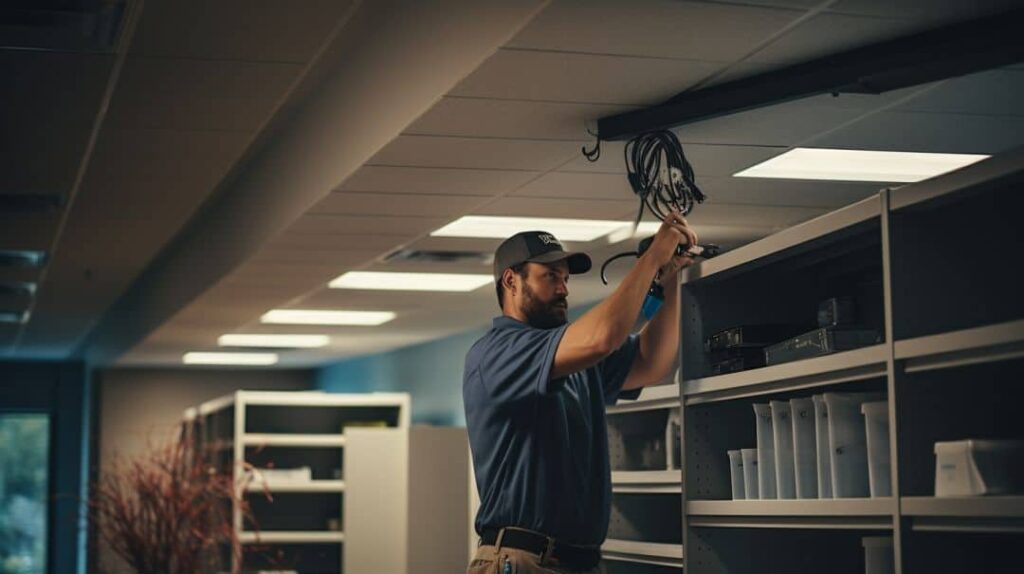
Securing your property is more than just an investment; it’s a commitment to safety and continuity. Let this guide be your roadmap to setting up a robust security system that shields against threats both seen and unseen.
Recognize that proper planning, installation, and maintenance are key steps in safeguarding what matters most. Explore additional resources or consult with professionals to deepen your understanding and further enhance your system’s efficacy.
Stand empowered knowing you have the necessary tools at hand for protection and peace of mind. Act now, fortify your defenses, and rest assured in the knowledge that you are prepared for whatever challenges may come. Contact us or Call (267) 662-1457.
FAQs
What factors should I consider when selecting security cameras?
When choosing security cameras, key aspects to consider include the camera resolution, field of view, performance in various lighting conditions, motion detection capabilities, wired vs wireless, weather resistance if placing them outdoors, local storage vs cloud storage options, smart home and mobile app compatibility, and ease of remote access and control. Selecting the right cameras is critical for an effective system.
Should I hire professionals or install a security system myself?
Opting to hire professional installation services ensures your system functions optimally from the start and technicians can handle complex wiring and networking challenges. However, DIY security setups allow you to customize the system, become familiar with components, and save on upfront costs – though lack of expertise can risk safety gaps or issues from improper installation.
How can I ensure my cameras maintain a reliable connection?
To guarantee your wired and wireless security cameras connect properly, choose a strong Wi-Fi network password, place wireless cameras near your router with minimal obstructions, assign static IP addresses, enable data encryption, securely attach cables and conduit to prevent tampering, and weatherproof outdoor cables. Perform periodic connection tests too.
What maintenance tasks should I do to keep my system working effectively?
Essential security system maintenance includes visually inspecting all equipment monthly, testing motion sensors and battery levels, reviewing camera feeds and night vision performance, updating firmware regularly, checking user permissions and emergency contact details quarterly, and testing system controls like arming and disarming functions.
What are some common issues and solutions for a security system?
Common troubleshooting steps involve checking camera power and connections, adjusting motion sensor sensitivity, cleaning dirty camera lenses, confirming mobile app and email alert settings are enabled, replacing faulty night vision lights, checking for network conflicts causing spotty recording, and updating incompatible system software or firmware. Rebooting cameras and routers often helps too.
